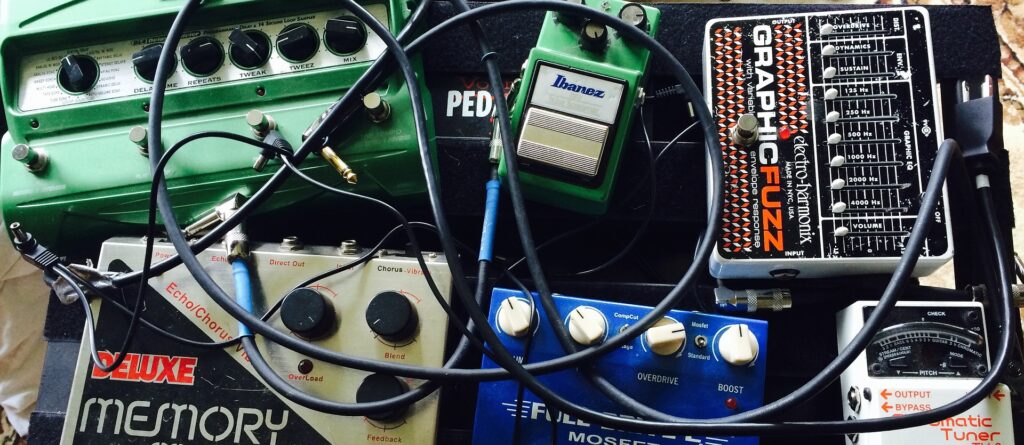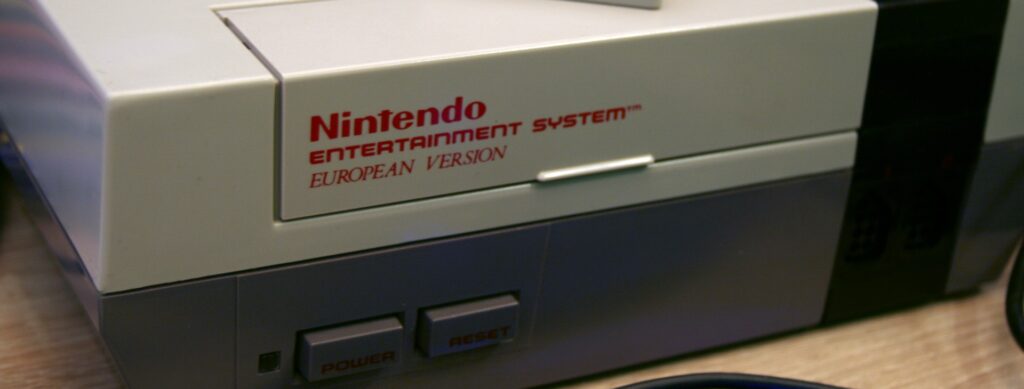Over the past century, a multitude of clever engineers, zany musicians, and curious minds have spawned thousands of guitar pedals and stompboxes that push the envelope in every direction. You could spend days scouring the internet for the latest and craziest inventions out there, so we made it easy and compiled four of the weirdest guitar pedals to get you started.
1. DigiTech Dirty Robot Pedal
If you’re looking to transform your guitar or bass into a synthesizer, check out the Dirty Robot pedal. This pedal has two distinct voice settings: an envelope synth and a vocal formant tape synth. There are also four knobs on this pedal: Mix, Drift, Start/Stop, and Sens/Time.
While the sound you get will depend on the settings you choose, the result always sounds a bit alien or futuristic. A single note can sound like a laser blast or a robot beep. This pedal would be a perfect fit for nerd-rock outfits or sci-fi sound design.

2. Rainbow Machine by Earthquaker Devices
You can go even further into space (or maybe beyond this dimension) with the Rainbow Machine pedal, a polyphonic harmonizer. The pedal takes a note, pitch shifts it in real-time, and then adds polyphonic harmonies as the sound trails off. This results in a pixie-like dusting of notes. With six knobs to play with (Secondary, Pitch, Primary, Magic, Tone, Tracking), this pedal is jam-packed with magical potential.
The «magic» knob is a fun shorthand way of describing the pedal’s main trick, in which the primary and secondary functions are fed back to each other. Using the tracking knob, the pedal can also be used for more typical delay types, like slapback echo and reverb, as long as the «pitch» knob is docked at the center.
3. Graphic Fuzz Pedal by Electro-Harmonix
Admittedly, this pedal might not be as weird as the other three on this list, but it’s certainly unique. Unlike typical distortion guitar pedals, the graphic fuzz pedal combines distortion with graphic EQ control. This means you can manipulate the stereophonic frequencies, with controls for these bands: 125 Hz, 250 Hz, 500 Hz, 1000 Hz, and 2000 Hz. There are also controls for distortion, dynamics, sustain, and volume, making this a very flexible pedal.
4. Hexe Guitar Pedals: BitCrusher III
This one is for retro video game lovers. The BitCrusher III reduces the sample rate of the input signal, thereby «crushing» or distorting the digital audio. This results in a lo-fi output signal that recalls early video game soundtracks with limited bandwidth. Indeed, the BitCrusher III might be the perfect tool for making music for a retro indie game.
The pedal is filled with options as well. The downsample knob allows you to set the sampling frequency between 32 kHz and 1 kHz. The telephone knob is a bandpass filter to achieve additional lo-fi sounds, and the blend knob mixes the wet and dry signals.

Conclusion
We’ve only begun scratching the surface of all the weird and wonderful guitar pedals out there. There’s a lot to explore, and new pedals are being designed every day, so let your creativity shine and try some of them out!
Sobre el autor

Ethan Keeley
Escritor, locutor, músico y editor de audioEthan Keeley es músico, locutor y escritor de Rochester, Nueva York. Cuando no está de gira con su grupo Unwill, trabaja en nuevas canciones e historias.
Deja un comentario
Inicia sesión para comentar


